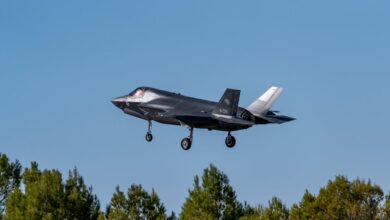Smarter AI Training with Few-Shot Natural Language Tasks

Smarter AI Training with Few-Shot Natural Language Tasks
Estimated Reading Time: 7 minutes
- Few-shot learning addresses data scarcity in NLP by enabling AI models to learn effectively from a handful of examples, adapting pre-trained models efficiently.
- Advanced techniques like Adapters and Mixture-of-Adaptations (AdaMix) enhance few-shot performance, allowing models to customize large language models with minimal training data.
- This approach significantly reduces development costs and time, making sophisticated AI more accessible and agile for specialized applications and low-resource languages.
- AdaMix, specifically, has demonstrated superior performance over traditional fine-tuning and other Parameter-Efficient Fine-Tuning (PEFT) methods across various Natural Language Understanding (NLU) tasks.
- Implementing few-shot strategies involves leveraging robust Pre-trained Language Models (PLMs), carefully curating small, representative datasets, and adopting PEFT methods.
- Smarter AI Training with Few-Shot Natural Language Tasks
- The Data Bottleneck: A Challenge for Modern NLP
- Unlocking Efficiency with Few-Shot Natural Language Learning
- Pioneering Techniques for Adaptive AI Training
- Real-World Impact: Few-Shot AI in Action
- Implementing Few-Shot Strategies in Your AI Projects
- Conclusion
- Frequently Asked Questions
In the rapidly evolving landscape of artificial intelligence, Natural Language Processing (NLP) models have achieved remarkable feats, from sophisticated chatbots to advanced content generation. However, a significant hurdle persists: the insatiable demand for vast amounts of labeled data to train these powerful models. This demand can be resource-intensive, time-consuming, and often impractical for niche applications or languages with limited digital resources.
Enter few-shot learning – a paradigm shift that promises to unlock greater efficiency and accessibility in AI development. By enabling models to learn effectively from a handful of examples, few-shot natural language tasks are paving the way for smarter, more adaptable AI systems. This approach not only democratizes AI by lowering the barrier to entry but also accelerates the deployment of specialized NLP solutions across diverse industries.
The Data Bottleneck: A Challenge for Modern NLP
Traditional supervised learning, the cornerstone of many successful NLP applications, relies heavily on large datasets where each data point is meticulously labeled. For tasks like sentiment analysis, named entity recognition, or machine translation, this can mean manually annotating millions of sentences. The sheer scale of this effort translates into significant costs, delays, and a dependence on expert human annotators.
Moreover, the generalizability of models trained on massive, broad datasets can sometimes falter when confronted with highly specific domains or low-resource languages. Building a separate, extensive dataset for every unique application becomes infeasible. This “data bottleneck” hinders innovation and limits the agility required to respond to dynamic market needs or emerging linguistic phenomena. Overcoming this challenge is crucial for the next generation of AI development.
Unlocking Efficiency with Few-Shot Natural Language Learning
Few-shot learning addresses the data bottleneck head-on by drawing inspiration from human cognitive abilities – our capacity to generalize from minimal exposure. Instead of demanding thousands or millions of examples, few-shot NLP models can learn new tasks or adapt to new domains with just a handful of labeled instances. This is primarily achieved by leveraging the power of pre-trained language models (PLMs) like BERT, RoBERTa, or GPT, which have already acquired a broad understanding of language from vast amounts of unlabeled text.
The core idea is to fine-tune these powerful PLMs not from scratch, but with a few target-specific examples. This process isn’t about re-learning language, but about efficiently adapting existing knowledge to a novel context. By intelligently transferring learned representations, few-shot techniques significantly reduce the need for extensive data annotation, making AI development faster, more cost-effective, and applicable to a much wider range of scenarios. It enables rapid prototyping and deployment of specialized NLP capabilities where traditional methods would be prohibitive.
Pioneering Techniques for Adaptive AI Training
The field of few-shot natural language tasks is rich with innovative methodologies designed to maximize learning from limited data. Researchers are continuously refining techniques that allow models to become adept at new challenges without suffering from “catastrophic forgetting” or overfitting to the few available examples. Among these, methods like Mixture-of-Experts (MoE) and Adapters have emerged as foundational, offering modular and efficient ways to customize large pre-trained models.
MoE architectures allow different parts of a model to specialize in different types of inputs, dynamically routing data to the most appropriate “expert.” Adapters, on the other hand, are small, learnable modules inserted into pre-trained models, allowing fine-tuning of these small components while keeping the vast majority of the pre-trained weights frozen. This dramatically reduces the number of parameters that need to be trained, leading to faster training times and lower memory footprints.
Building upon these foundations, advanced strategies like Mixture-of-Adaptations (AdaMix) represent the cutting edge. AdaMix combines the benefits of both MoE and adapters, dynamically routing inputs to a mixture of task-specific adapters. This allows for a more nuanced and efficient adaptation process, enabling models to handle diverse tasks with impressive performance, even with very limited data.
Table of Links
- Abstract and 1. Introduction
- Background
- 2.1 Mixture-of-Experts
- 2.2 Adapters
- Mixture-of-Adaptations
- 3.1 Routing Policy
- 3.2 Consistency regularization
- 3.3 Adaptation module merging and 3.4 Adaptation module sharing
- 3.5 Connection to Bayesian Neural Networks and Model Ensembling
- Experiments
- 4.1 Experimental Setup
- 4.2 Key Results
- 4.3 Ablation Study
- Related Work
- Conclusions
- Limitations
- Acknowledgment and References
- Appendix
- A. Few-shot NLU Datasets B. Ablation Study C. Detailed Results on NLU Tasks D. Hyper-parameter
A Few-shot NLU Datasets
Data. In contrast to the fully supervised setting in the above experiments, we also perform fewshot experiments following the prior study (Wang et al., 2021) on six tasks including MNLI (Williams et al., 2018), RTE (Dagan et al., 2005; Bar Haim et al., 2006; Giampiccolo et al., 2007; Bentivogli et al., 2009), QQP and SST-2 (Socher et al.). The results are reported on their development set following (Zhang et al., 2021). MPQA (Wiebe et al., 2005) and Subj (Pang and Lee, 2004) are used for polarity and subjectivity detection, where we follow (Gao et al., 2021) to keep 2, 000 examples for testing. The few-shot model only has access to |K| labeled samples for any task. Following true few-shot learning setting (Perez et al., 2021; Wang et al., 2021), we do not use any additional validation set for any hyper-parameter tuning or early stopping. The performance of each model is reported after fixed number of training epochs. For a fair comparison, we use the same set of few-shot labeled instances for training as in (Wang et al., 2021). We train each model with 5 different seeds and report average performance with standard deviation across the runs. In the few-shot experiments, we follow (Wang et al., 2021) to train AdaMix via the prompt-based fine-tuning strategy. In contrast to (Wang et al., 2021), we do not use any unlabeled data.
B Ablation Study
C Detailed Results on NLU Tasks
The results on NLU tasks are included in Table 1 and Table 13. The performance AdaMix with RoBERTa-large encoder achieves the best performance in terms of different task metrics in the GLUE benchmark. AdaMix with adapters is the
only PEFT method which outperforms full model fine-tuning on all the tasks and on average score. Additionally, the improvement brought by AdaMix is more significant with BERT-base as the encoder, demonstrating 2.2% and 1.2% improvement over the performance of full model fine-tuning and the best performing baseline UNIPELT with BERTbase. The improvement is observed to be consistent as that with RoBERTa-large on every task. The NLG results are included in Table 4 and 5.
D Hyper-parameter
Detailed hyper-parameter configuration for different tasks presented in Table 15 and Table 16.
As detailed in the research referenced above, AdaMix demonstrates remarkable capabilities across various Few-shot NLU Datasets. It was rigorously tested on tasks like MNLI, RTE, QQP, SST-2 for natural language inference and sentiment, and MPQA & Subj for polarity and subjectivity detection. Crucially, AdaMix, when combined with adapters, stands out as a Parameter-Efficient Fine-Tuning (PEFT) method that not only competes but often surpasses the performance of full model fine-tuning across all tasks and on average scores. This indicates a significant leap in efficiently adapting large models without the extensive computational overhead of retraining every parameter.
The consistency of these improvements across different encoder architectures, such as BERT-base and RoBERTa-large, further validates the robustness of AdaMix. With BERT-base, AdaMix showed improvements of 2.2% over full model fine-tuning and 1.2% over leading baselines like UNIPELT, highlighting its powerful adaptability. This extensive experimentation by Yaqing Wang and their collaborators from Purdue University and Microsoft Research underscores the potential of few-shot learning to redefine how we approach AI training, making it more agile and performant.
Real-World Impact: Few-Shot AI in Action
Consider a small e-commerce business specializing in handcrafted, artisanal goods. They receive a modest volume of customer inquiries daily, many pertaining to unique product features or specialized crafting techniques. Training a traditional NLP chatbot to answer these questions would require manually labeling thousands of specific queries and responses, a prohibitively expensive and time-consuming task for a small team.
With few-shot learning, this business can leverage a pre-trained language model and adapt it using just a few dozen examples of their specific customer queries and ideal answers. The few-shot model quickly learns the nuances of their product catalog and customer language, enabling the deployment of a highly effective, domain-specific chatbot that understands and responds accurately to customer inquiries. This dramatically improves customer service efficiency and satisfaction without the need for extensive data engineering, illustrating the practical, accessible power of few-shot natural language tasks.
Implementing Few-Shot Strategies in Your AI Projects
Embracing few-shot learning can transform your approach to AI development, making it more agile and resource-efficient. Here are three actionable steps to integrate these smarter training methods into your projects:
- Leverage Pre-trained Language Models (PLMs): Start with robust, publicly available PLMs like BERT, RoBERTa, or even larger models depending on your computational resources. These models serve as powerful foundational knowledge bases, drastically reducing the initial learning curve for your specific tasks.
- Curate Your Few-Shot Datasets Thoughtfully: Even with minimal data, quality matters. Select diverse and representative examples for your few-shot training. Focus on examples that capture the core variations and challenges of your specific NLP task. While few in number, these examples are critical for guiding the model’s adaptation.
- Explore Parameter-Efficient Fine-Tuning (PEFT) Methods: Delve into techniques beyond full fine-tuning. Investigate methods like adapters, LoRA (Low-Rank Adaptation), or advanced techniques like Mixture-of-Adaptations (AdaMix) as discussed earlier. These approaches enable you to efficiently adapt PLMs to new tasks by training only a small fraction of parameters, saving computational resources and accelerating deployment.
Conclusion
Few-shot natural language tasks represent a critical advancement in the field of AI, offering a compelling solution to the persistent challenge of data scarcity. By enabling models to learn intelligently from minimal examples, these methods are not just about efficiency; they are about making sophisticated AI accessible to a broader range of applications and organizations. From accelerating development cycles to reducing operational costs, smarter AI training with few-shot techniques is setting a new standard for adaptability and performance.
As AI continues to integrate more deeply into our daily lives, the ability to rapidly deploy highly specialized and accurate NLP solutions with limited data will be paramount. Few-shot learning isn’t just a trend; it’s a fundamental shift towards more intelligent, resource-aware, and ultimately, more impactful artificial intelligence.
Frequently Asked Questions
What is few-shot learning in NLP?
Few-shot learning in Natural Language Processing (NLP) is an advanced machine learning paradigm that allows AI models to learn new tasks or adapt to new domains with only a small number of labeled examples. It leverages pre-trained language models and efficient adaptation techniques to overcome the traditional data bottleneck, significantly reducing the need for extensive data annotation.
How does few-shot learning differ from traditional supervised learning?
Traditional supervised learning requires vast amounts of meticulously labeled data to train models from scratch or fine-tune them extensively. In contrast, few-shot learning adapts pre-trained models using a handful of examples, relying on the model’s pre-existing broad language understanding. This makes it far more resource-efficient and suitable for specialized applications with limited data.
What are some key techniques used in few-shot NLP?
Key techniques include the use of Pre-trained Language Models (PLMs), Adapters (small, learnable modules inserted into PLMs), and Mixture-of-Experts (MoE) architectures. Advanced methods like Mixture-of-Adaptations (AdaMix) combine these concepts for dynamic and highly efficient model adaptation with minimal data.
What are the benefits of using few-shot learning for AI projects?
The benefits include faster AI development cycles, significantly reduced data annotation costs, lower computational resource requirements, and greater adaptability to niche domains or low-resource languages. It democratizes access to sophisticated AI, enabling businesses to deploy specialized NLP solutions quickly and cost-effectively.
Can few-shot learning outperform full model fine-tuning?
Yes, research has shown that advanced few-shot techniques, such as AdaMix combined with adapters, can not only compete but often outperform full model fine-tuning across various Natural Language Understanding (NLU) tasks. This is due to their efficient adaptation mechanisms that prevent catastrophic forgetting and overfitting, allowing them to generalize effectively from limited examples.





